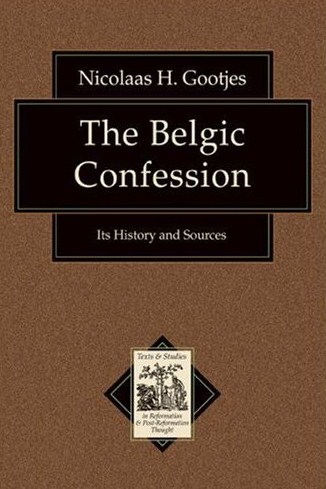Book Review: The Belgic Confession


In honour of the Belgic Confession’s 450th birthday this year, I’ll be posting a number of items related to it in the next while. This review dates back from 2008. I’ve updated a few small details in it. Let me add that this book continues to be well-used in my Belgic Confession research.
The Belgic Confession: Its History and Sources, Nicolaas H. Gootjes, Grand Rapids: Baker Academic, 2007. Paperback, 229 pages, $37.00.
Over the years, numerous commentaries have been published on the firstborn of our confessional family, the Belgic Confession. Most of these commentaries give a brief overview of the history of the Confession, but these introductions are typically regurgitated from the research of others. Moreover, up till the publication of this book, we did not have a work in English dedicated to the study of the history and background of the Belgic Confession.
The author, retired professor of dogmatics at Canadian Reformed Theological Seminary, has carefully studied all the available source documents and presents some fresh, surprising results. Since the publication of his earlier research on the subject, we knew for certain that the authorship of the Confession rests with Guido de Bres. But what we didn’t know was how much of a threat de Bres presented to the Roman Catholic Church. This knowledge comes through a relatively unknown painting of the era in which de Bres is included with other Reformers such as Calvin, Beza, and Luther. Gootjes includes a reproduction of the painting along with some valuable commentary.
Besides his fascinating discussions of the history and authorship of the Confession, the author also explores the influence of Calvin and Beza. The mention of the latter is especially interesting, since he is often overlooked in discussions (in English) regarding the sources of the Confession. Through the course of three chapters, Gootjes traces the development of the authority of the Confession, noting that it was adopted by the churches in the Netherlands very early on, probably even before its publication in 1561. Chapter 7 deals with the Synod of Dort and the discussions concerning the Confession at the Synod and leading up to the Synod. This is an engaging section, especially for its portrayal of Arminius and his fudging with the Confession. With an eye to discussions of our day, it was also remarkable that the Synod of Dort discussed the inclusion of the doctrine of the active obedience of Christ. The chairman of the Synod, Bogerman, attempted to have article 22 rephrased so as to make room for a denial of this doctrine. In the end, all the delegates except for two (Bogerman and one other) voted this down and instead decided to strengthen the statement about this matter. The book concludes with a chapter surveying the various translations – this chapter is meant to be a survey, so it is not comprehensive (the early history of the Confession in Spanish is not mentioned, for instance). Nevertheless, it does reveal the widespread adoption of this creed.
Being a student of the Belgic Confession myself, I long anticipated the publication of this work. Gootjes did not disappoint! I am confident that this will be the definitive English source on the Confession’s history for many years to come.


